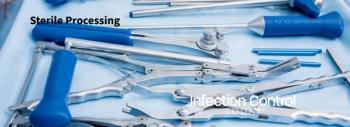
Ultrasound Transducer Disinfection: Better Guidelines/Recommendations Needed
With the CDC, FDA, and Joint Commission all using different guidelines and recommendations for the types of disinfection acceptable for various ultrasound transducers, clinicians should follow manufacturers’ instructions, but a more unified answer is needed.
The cleaning and disinfecting of ultrasound transducers and probes would seem to be straightforward. However, with the Centers for Disease Control and Prevention (CDC), Food and Drug Administration (FDA), Joint Commission, and others using differing guidelines and recommendations, clinicians can be confused about how to clean this vital equipment.
The
Moureau, PhD, RN, CRNI, CPUI, VA-BC, is an expert in the field of vascular access practice, owner and CEO of
This is the fourth of 4 segments of ICT®’s interview with Moureau. The first segment is
Infection Control Today® (ICT®): Since Centers for Disease Control and Prevention (CDC) and Food and Drug Administration (FDA) haven’t officially adopted the point of view supported by the
Nancy Moureau, PhD, RN, CRNI, CPUI, VA-BC: Clinicians need to be aware of the manufacturers’ instructions for use on how to clean and disinfect transducers or probes appropriately, and they need to provide training to all of the personnel who are using those devices. FDA expects clinicians to follow the instructions for use approved for the device, so practitioners should ensure that their disinfection practices are consistent with the manufacturer’s recommendations.
The
We don’t want to overstep the evidence and require high-level disinfection or sterilization when there’s not enough evidence to support that stance. But over the past few years, some organizations have done exactly that, jumping to require high-level disinfection when there wasn’t enough research or evidence to support such requirements.
Where we’re at now is that we’re rethinking the processes, looking closely at the research and evidence that supports certain practices, and being willing to make some adjustments in order to provide clinicians with the best information and guidance.
ICT®: Why do you think some organizations jumped to require high-level disinfection so quickly?
NM: Clinicians inthe United States are often eager to adopt the newest and most-extensive notions being promoted among their peers. Even when there hasn’t been enough investigation into the evidence supporting such recommendations, or where there is no supporting literature at all, some clinicians are willing to accept hearsay and adopt someone else’s recommendations.
The initial concern was that there has been an increase in the rate of infections associated with peripheral catheter insertions. Some organizations formed taskforces to look into the issue, and their knee-jerk response was to recommend fully sterile insertions, guided by ultrasound transducers that also needed to be completely sterile. But those groups didn’t really consider the lack of evidence supporting sterilization or high-level disinfection in the case of percutaneous procedures, nor did they consider the increased cost, time, and other ramifications associated with such a recommendation. Now those facilities and organizations are rethinking their positions and aligning with the Intersocietal Position Statement, in favor of low-level disinfection effective against bloodborne pathogens.
In my opinion, it is not necessary for peripheral catheter insertion to be performed as a fully sterile procedure. It is certainly a good thing if IV start kits include components that are sterile—sterile gloves, sterile tape, sterile gauze, and so on. But my observation is that even when such supplies start out as sterile, clinicians very quickly contaminate them during the procedure, and they do not seek to maintain the sterility of their gloves or other supplies.
Aseptic non-touch technique (ANTT) is a new approach that we’re trying to teach across clinical specialties to help clinicians understand about touch contamination, and how to perform a procedure in a safe way, regardless of what kind of gloves they are using.
When performing a percutaneous procedure, practitioners should keep in their minds the various points of contact that can cause contamination and promote bloodstream infections. Everything that the clinician touches represents a potential point of risk—the patient’s skin, the hub of the catheter, a catheter flow valve, and so on. What items can be touched, and what key supplies must remain sterile with no touch, are factors that should influence how a procedure is performed.
Again, it all comes back to education and training. ANTT is a really valuable method that we should teach clinicians in all care settings in order to safeguard patients.
ICT®: What other approaches could be used to improve the safety of percutaneous procedures?
NM: I would love to see our processes be subject to credentialing or certification, so that clinicians would need to verify that they’ve completed their education prior to performing insertions on patients. I would also like to see some accountability for the success rate and longevity of catheter insertions. When a clinician performs a procedure and the catheter fails in a few hours, that shows the insertion was not performed well. Performing the procedure again unnecessarily places the clinician and the patient at risk of needlestick injuries, venous depletion, and other types of complications.
It would be useful to establish some consistent access to education or consistent performance of education with supervised observation of competency as regular processes within all health care facilities. We need to incorporate these practices for all clinicians who are performing percutaneous procedures.
Newsletter
Stay prepared and protected with Infection Control Today's newsletter, delivering essential updates, best practices, and expert insights for infection preventionists.





